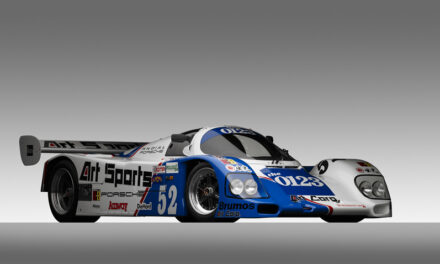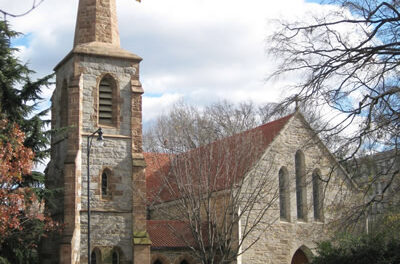The movement of feeding birds, scratching around in the soil, is distinctive. In part, it’s born from the need to move surface material around for a closer look at the ground – and also to keep the eyes moving. Regardless, it’s the same kind of up/down, side to side, up, then over and around, then down, and finally up kind of movement that started off this concert. The Biava String Quartet players are so committed – and so ready – they looked like feeding Carolina chickadees during the opening bars of Haydn’s “Rider” Quartet. That’s not a bad thing – it just is. Such is the intensity of the Biava SQ members. But soon this visual distraction took a back seat to tremendous string playing and a meaty program.
This group is relatively young, founded in September 1998 and named after the contemporary musician Luis Biava, long-time professor of music at Temple University’s Boyer College of Music and Dance. Biava was also associated with the Philadelphia Orchestra starting in 1968, holding many roles. He was conductor in residence until 1994 and had been on the orchestra’s roster of conductors since 1985, and he played as a member of the orchestra for three decades (16 of those years as principal second violin). In an interview for the Swanannoa Music Chamber Music Festival, quartet members Mary Persin and Austin Hartman commented “(Biava) embodied things that were a tangible model for our quartet. His passion for chamber music, his generosity of spirit and love for sharing music with audiences of all ages and backgrounds were things that inspired us.”
As a unit, they won the 2003 Naumburg Chamber Music Competition, and placed third at the 9th London International String Quartet Competition. They captured top prize honors in the 2002 and 2003 Young Concert Artists International Auditions, the 5th Coleman National Chamber Music Competition, and the 2001 Fischoff National Chamber Music Competition. The players all have individual honors including competition wins, and they have trained with the finest teachers at the New England Conservatory, Yale, and the Cleveland Institute.
The feeding frenzy began with Haydn’s Quartet in G minor, Op. 74, No. 3, called “Reiterquartett” (“The Rider”) after the galloping rhythms found in the first movement and the driving nature of the fourth. In between are a lovely Largo assai and a Menuetto that had a little too much leg to be recognized as a dance form so was instead quite nice as a lyrical tune.
Next was Ainsi la Nuit (Thus the Night) by French composer Henri Dutilleux (b.1916). Written in 1976 and consisting of seven brief movements, this work follows stylistic influences of the time, which included serial techniques plus the leading edge of “plink.” It is the period that generates the most wonder among novice listeners. There is rarely a memorable “tune” worthy of street-corner whistling; instead, we have accelerating repeated notes or chords that stop suddenly, followed by long tones often amid clashing intervals – all familiar clichés of the time. That said, we should also point out that all this music is precisely notated, quite demanding to execute in time and rhythm, and requires enormous vigilance among all members of an ensemble. It works very well as “night music”; it would work nicely as incidental music in a film, and it produced some interesting layered density. There were moments that didn’t sound string-made but more like a Moog Synthesizer, which is fitting because Robert Moog lived in Asheville for many years. So, in answer to the question, “Did he really write that?” the answer is “Yes Toto, and it was nicely done.”
After intermission, we heard the four-movement String Quartet in G minor, Op. 16, by Claude Debussy. This composer is a master in terms of exploiting a small idea across a large plane and then augmenting it throughout a work. The opening notes form the basis of the entire quartet. Composed at the dawn of Impressionism, it features many timbre changes including flesh-strummed chords. For its time, this work simply bristled with violations of conventional form, thus setting in motion trends that would dominate composers afterward. Notes made during the performance chart the music’s course: “rhythmically complex, melodically convoluted, zigzags, limited tessitura, imaginative procession of transformed shapes and guises, sparkling tonal effects, brilliant pizzicato flourishes, and scintillating cross-rhythms.” The viola, in particular, has some wonderful lines that were quite well played this night.
After the concert they answered questions and chatted with audience members – always a good marketing touch.
The members of the Biava String Quartet are Austin Harman and Hyunsu Ko, violins, Mary Persin, viola, and Jacob Braun, a cellist with a distinctly warm, clear sound that is not at all cello-like. He is a guy we’ll hear more about in the future.
We live in an era of embarrassing riches. In community series, on recordings, and across the airwaves, chamber music in America has reached not only new performance standards but also new depth of numbers. Our schools and community studios have produced tremendous young musicians and early opportunities for ensemble performance. In turn, more “new” groups form and emerge, scratching for a place at art music’s economic table. The down side of this trend is that wonderful ensembles like this one run the risk of sounding average by comparison – of being viewed as a mid-pack group of young wannabes. Some might conclude, “They didn’t set themselves on fire, so they’re only good!” But given the musical depth and personalities of these four players, it’s my guess that they will be around for a while. You can hear them this summer at the Swannanoa Chamber Music Festival.
And you can hear the Pacifica Quartet on the Asheville Chamber Music series, on April 7; see our calendar for details.













